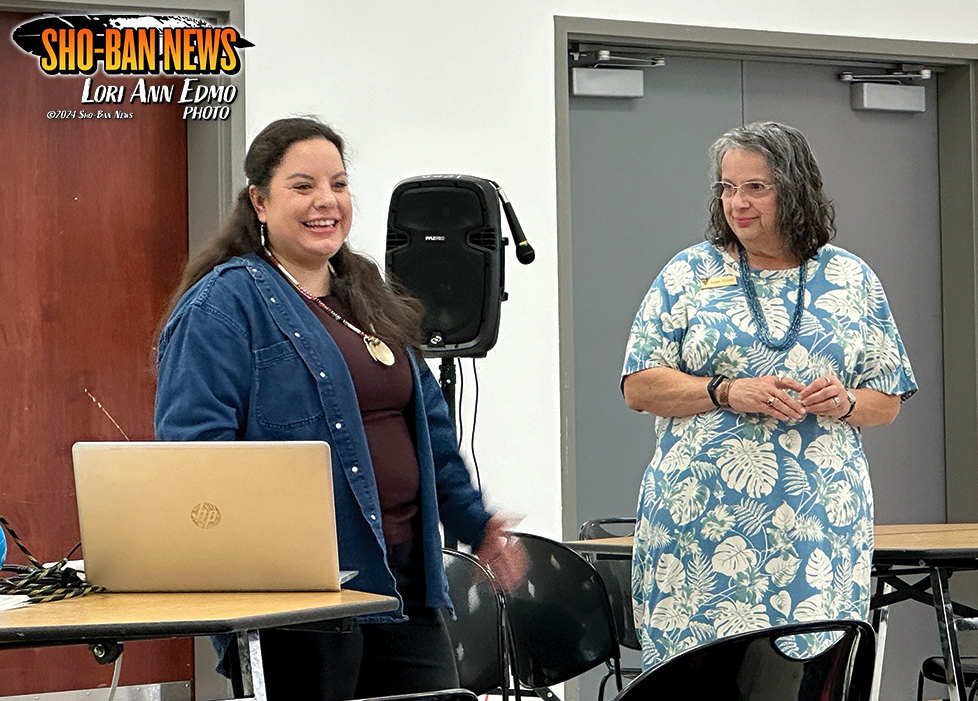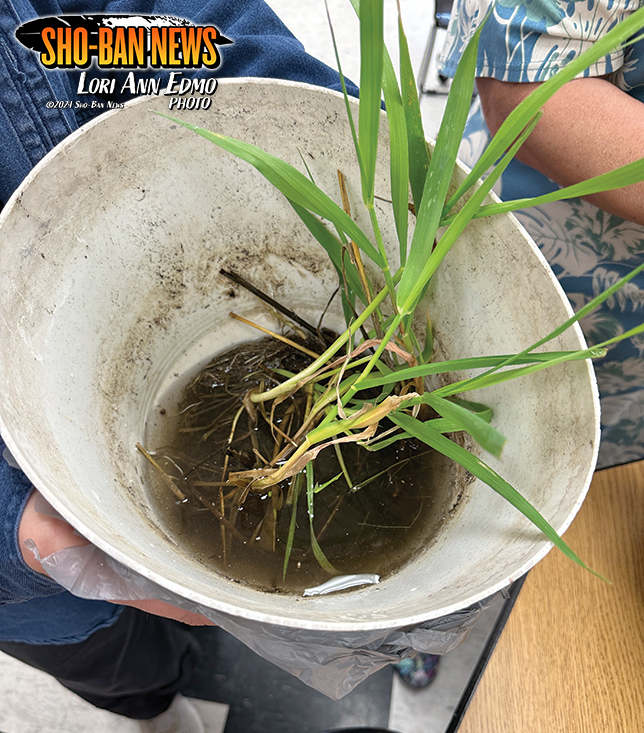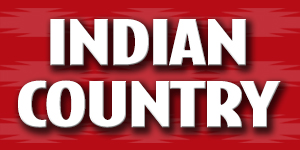Workshop teaches about caring for camas

LCPD's Bailey Dann and Idaho BLM Tribal Liaison Susan Filkins present at the May 18 Tamme Pasigo Maviziakande
(we take care of camas) workshop.
By LORI ANN EDMO
Sho-Ban News
FORT HALL — Participants at the May 18 Tamme Pasigo Maviziakande (we take care of camas) workshop were encouraged to learn how to rid the invasive grass Garrison’s creeping meadow foxtail that is choking out the traditional food source at the Camas Prairie near Fairfield.
They also learned about the Bannock War of 1878 history that started because of settlers pigs digging up the roots on the Prairie when Buffalo Horn and his warriors led the campaign into Oregon and Montana. Nolan Brown, Original Territories and Historical Research manager, gave a PowerPoint presentation on the subject.
Now the Tribes are waging a second Bannock War and this time it’s on the invasive grass called Garrison creeping meadow foxtail that is currently present on 25 to 30% of the prairie that has potential to double every five years according to Terry Gregory, researcher and former Wildlife Management Area (WMA) manager.
The Camas Prairie was included in the 1868 Fort Bridger Treaty but the area was excluded because of a stenographer error spelling it Kansas Prairie.
The Prairie was also noted in the Long Tom Creek Treaty when Chief Taghee said he wanted the right to camp and dig roots on the Camas Prairie when going to Boise City to trade. “Some of my people have not horses. They can remain at Camas Prairie and dig roots while others go on,” he said in historical records.
Participants made their own bodo, or digging stick.
Regardless, the Camas Prairie still has great significance to the Shoshone-Bannock Tribes as tribal members still return their in late May and June to dig the camas root as it’s considered a traditional food staple. According to the Shoshone-Bannock Tribes Language and Culture Preservation Department in the Shoshone and Bannock language pasigo and tsuga are the words for camas.
Garrison’s creeping meadow foxtail is a long-lived cool season perennial grass first introduced in the late 1800s as a pasture grass from Eurasia. It grows three to six feet tall and forms in groups through underground stems (rhizomes). It was planted in the Camas Prairie Centennial Marsh (CPCM) and surrounding areas for forage, hay production and erosion control. Idaho doesn’t recognize it as invasive but tribal members who annually harvest have noticed it.
Much discussion occurred about the grass and methods to get rid of it.
Susan Filkins, Idaho BLM Tribal Liaison, said ridding it is a 20 to 30 year project because they don’t want to use chemicals because it would affect the camas.
Idaho Fish and Game manage the Wildlife Management Area. The Tribes are working with IF&G, Natural Resources Conservation Center, the Bureau of Land Management, Idaho State University and the Northwest Center for Alternatives to Pesticides.

Invasive grass shown.
Yvette Towersap suggested since the Camas Prairie Centennial March is managed by the state, a bill should be presented to the Idaho Legislature recognizing the camas as a unique plant so that gives more authority to tell the federal and state agencies to protect the plant.
Zelphia Towersap also expressed concerned about yampa and sunflowers and how it’s declined in the area.
It was also suggested to find another location near the prairie to plant camas. LCPD Director Louise Dixey said they found out IDF&G acquired property through Bonneville Power mitigation funds where the Tribes can access the land and plant additional camas. There’s also individuals on private land offering tribal members to harvest camas on their property.
Filkins brought live plants of the invasive grass to show how to pull the plants when going to the Camas Prairie Homecoming May 31 and June 1. It will take multiple trips to the area to continue to pull the invasive grass. She also showed the seed heads that will need to be removed.
NRCS has also looking at changing the ratio of the Garrison’s seed mix applied in the area because farmers and ranchers feed it to their cows.
After a lunch of deer roast, Bannock bread and fruit was served. In the afternoon a bodo or digging stick class was conducted so participants could make their own.





